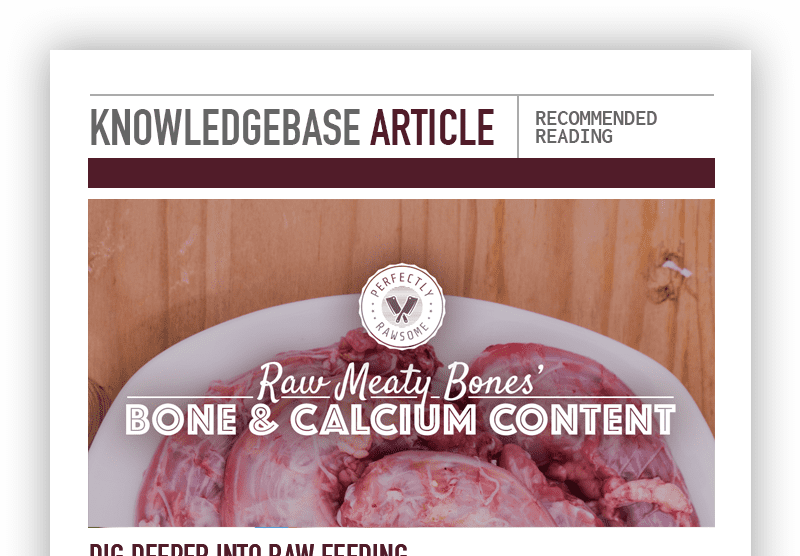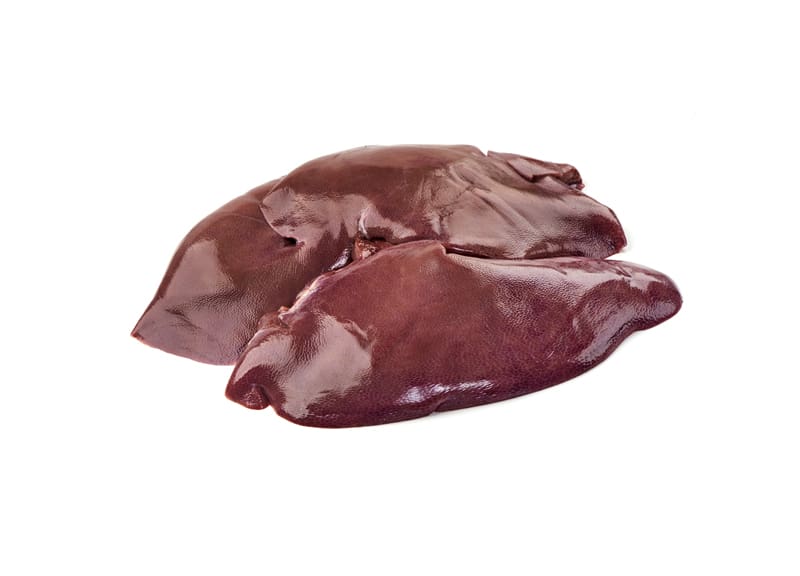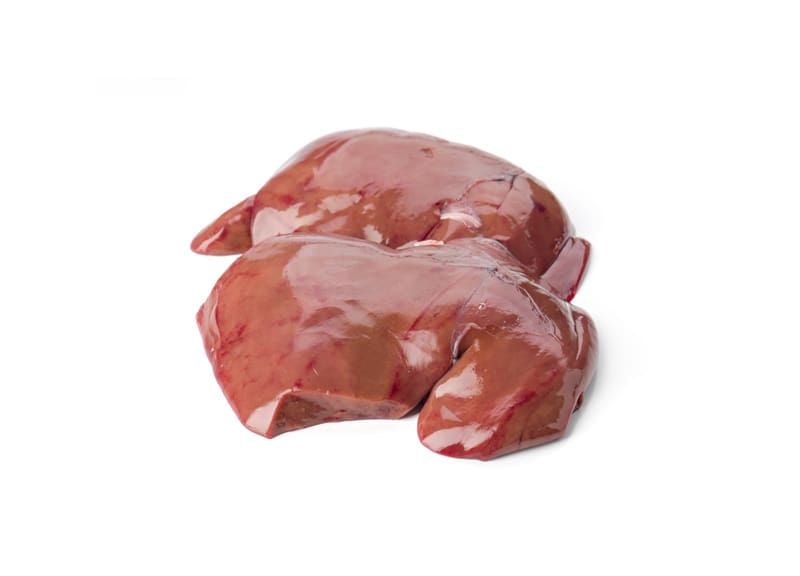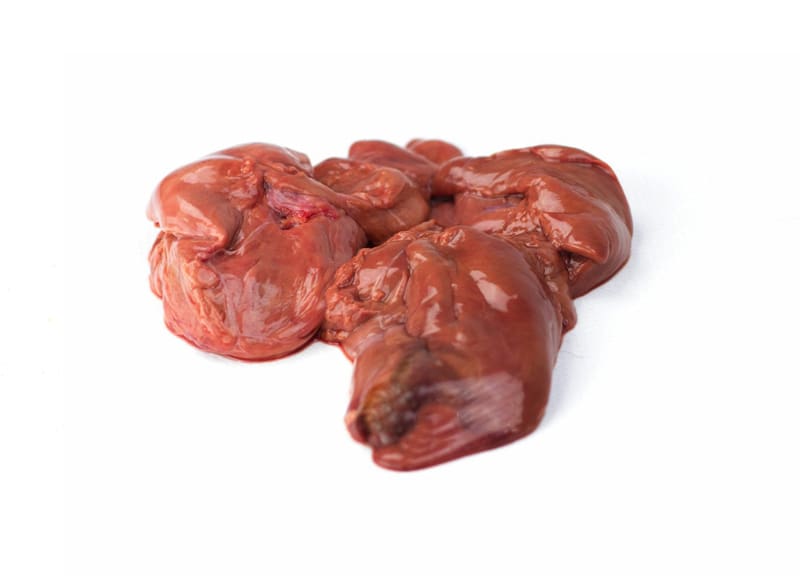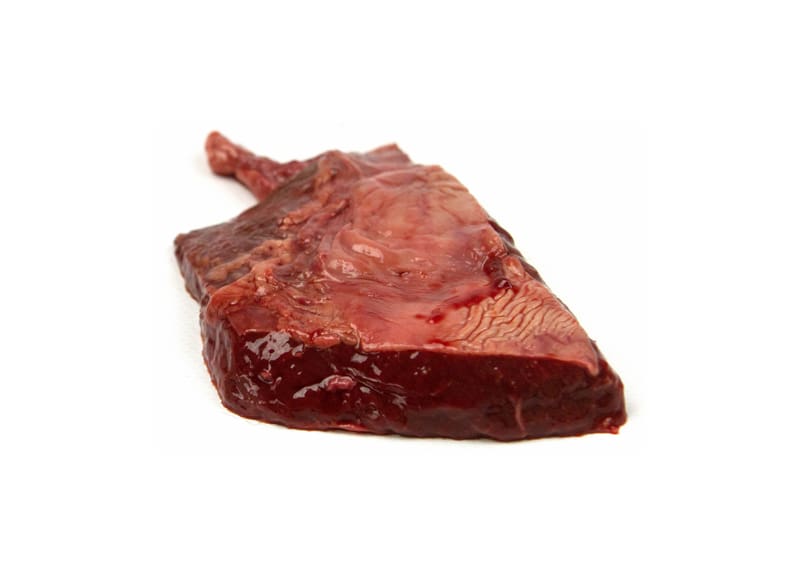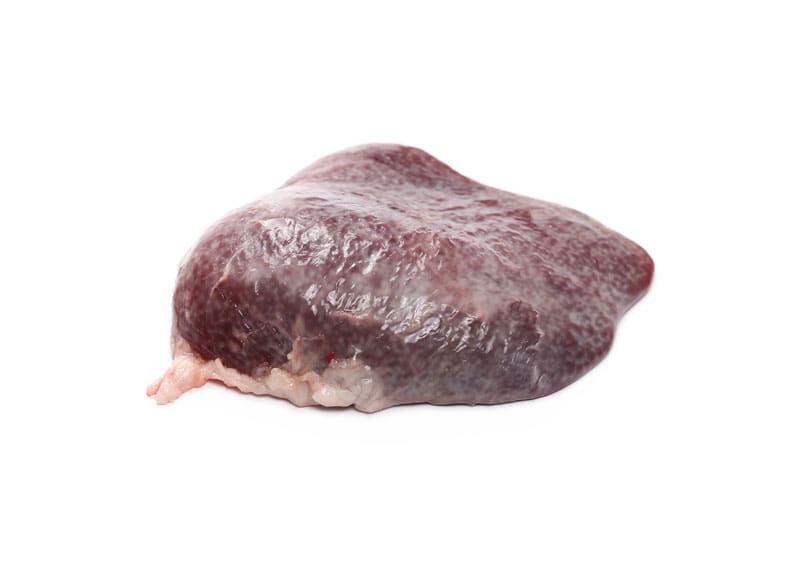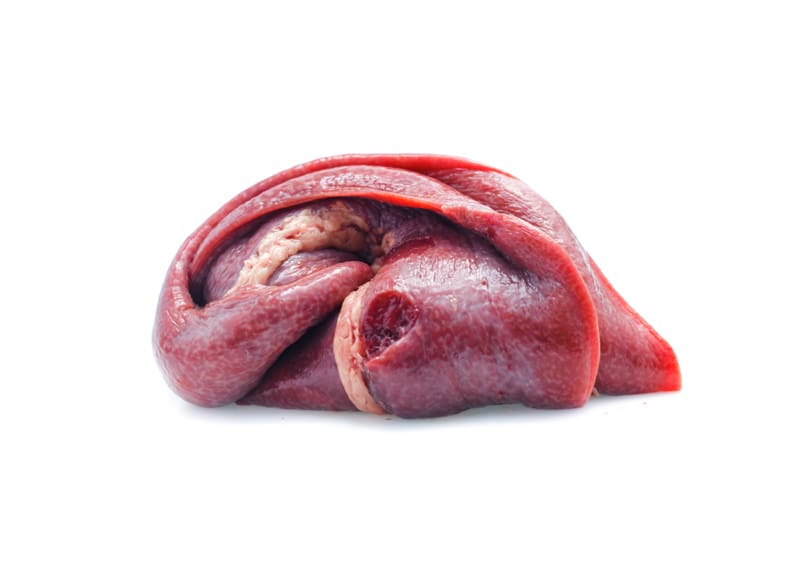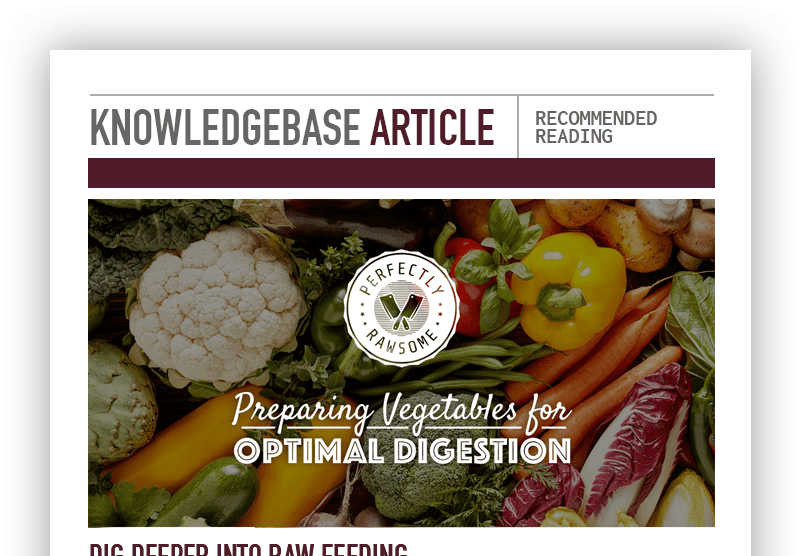Feeding a pregnant or lactating female dog a raw diet is slightly different than the traditional raw feeding guidelines for healthy adult dogs. These modifications are recommended to ensure that the pregnant female receives all essential nutrients necessary to develop and raise healthy puppies.
Throughout a female dog’s pregnancy, their body goes through many changes during gestation and lactation. These physical changes warrant diet adjustments to ensure appropriate nutrition is provided to maintain the health of the dog as well as her developing/nursing puppies.
Nutritional Requirements
The nutritional requirements for pregnant and lactating female dogs begin at the third trimester of gestation and end when the puppies are weaned onto solid food.
Raw Diet Adjustments
Modifications to traditional raw diets are necessary to provide a nutritionally adequate diet during the third trimester and lactation.
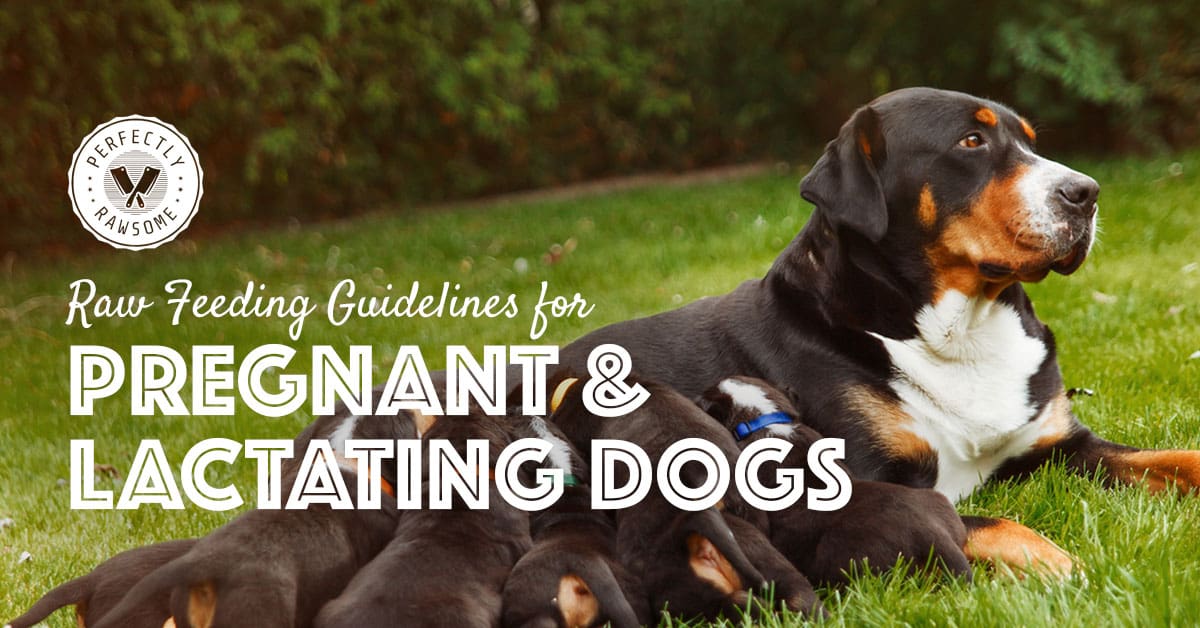
Nutritional Requirements
The nutritional requirements for a pregnant female change at the start of the third trimester of gestation and last until the end of lactation. Gestation in dogs averages a duration of 58 to 60 days and is broken into three trimesters. During the first two trimesters, the pregnant dog should be fed like a healthy, active dog that follows the PMR and BARF model guidelines for adult dogs. The amount of food she consumes will increase but her nutrient requirements remain the same as a normal, healthy adult.
After 40 days of gestation, the female dog will enter into the third trimester of her pregnancy. During this time the puppies are rapidly growing and the production of milk begins. These physical changes require dietary adjustments to provide optimal nutrition. Once the puppies are born, the mother dog will begin nursing to feed her litter.
Milk production is physically demanding on the body. It requires an increase in essential nutrients and calories to ensure the milk produced is sufficient to feed a litter of puppies. Lactation begins when the puppies are born and lasts until 4 weeks of age when weaning begins.
The National Research Council (NRC) has identified Recommended Allowances for essential nutrients for late gestation and peak lactation. These nutritional requirements are necessary to support the rapid development of puppies, milk production, and provide sufficient nutrition for the female dog throughout the third trimester and lactation.
Macronutrient Recommendations
The National Research Council (NRC) provides the following macronutrient recommendations for pregnant dogs during the third trimester of gestation and during lactation. The macronutrients are listed per 1000kcal consumed:
Proteins are large complex molecules composed of amino acids and are the main structural component of body tissue. Pregnant and lactating dogs do not have a nutritional requirement for protein because the body can synthesize new proteins with amino acids and nitrogen. However, adult dogs have specific requirements for amino acids, carbon skeletons, and nitrogen.
Protein supplied in food provides essential amino acids, carbon skeletons, and nitrogen to fulfill nutritional requirements. The primary role of protein is to supply amino acids for muscle and organ protein synthesis, the creation of enzymes, the creation of hormones, and energy.
National Research Council (NRC) provides the following protein recommendations for pregnant and lactating dogs per 1000kcal consumed:
Minimum: 50g
Recommended Allowance: 50g
Data Source:
National Research Council. Nutrient Requirements of Dogs and Cats. National Academies Press, 2007.
Fat provides nutritional compounds to supply pregnant and lactating dogs with energy, essential fatty acids (EFAs), and is a vehicle for nutrient absorption and transportation. Fat is the primary source of energy for dogs and providing a raw diet with sufficient amounts of fat is important to optimal health.
National Research Council (NRC) provides the following fat recommendations for pregnant and lactating dogs per 1000kcal consumed:
Minimum: 21.3g
Recommended Allowance: 21.3g
Maximum: 82.5g
Data Source:
National Research Council. Nutrient Requirements of Dogs and Cats. National Academies Press, 2007.
Carbohydrates are another source of energy and supply the body with glucose once digested and metabolized. There are two types of carbohydrates – simple and complex – and the difference between the two are the number of sugar molecules. Complex carbohydrates include starchy and fibrous foods, whereas simple carbohydrates are in foods such as fruit.
National Research Council (NRC) does not provide carbohydrate recommendations for pregnant and lactating dogs, but they have a nutritional requirement for glucose. Carbohydrates easily supply glucose. However, if there is no supply of carbohydrates in the diet, glucose requirements can be met through precursor nutrients, glycogenic amino acids or glycerol from fats, through gluconeogenesis.
Although dogs do not have a nutritional requirement for carbohydrates, this does not mean the addition of carbs is not beneficial. Pregnant and lactating dogs benefit from a the addition of starches to provide a quick source of energy when they are in the third trimester and nursing a litter of puppies.
Data Source:
National Research Council. Nutrient Requirements of Dogs and Cats. National Academies Press, 2007.
Essential Micronutrients
The National Research Council (NRC) provides the following micronutrient recommendations for pregnant dogs during the third trimester of gestation and during lactation. The micronutrients are listed per 1000kcal consumed:
| Nutrient | RA | Minimum | Maximum |
|---|---|---|---|
| Arginine | 2.50 g | 2.50 g | – |
| Histidine | 1.10 g | 1.10 g | – |
| Isoleucine | 1.78 g | 1.78 g | – |
| Leucine | 5.00 g | 5.00 g | – |
| Lysine | 2.25 g | 2.25 g | – |
| Methionine | 0.78 g | 0.78 g | – |
| Methionine + Cystine | 1.55 g | 1.55 g | – |
| Phenylalanine | 2.08 g | 2.08 g | – |
| Phenylalanine + Tyrosine | 3.08 g | 3.08 g | – |
| Threonine | 2.60 g | 2.60 g | – |
| Tryptophan | 0.30 g | 0.30 g | – |
| Valine | 3.25 g | 3.25 g | – |
Data Source:
National Research Council. Nutrient Requirements of Dogs and Cats. National Academies Press, 2007.
| Nutrients | RA | Minimum | Maximum |
|---|---|---|---|
| Linoleic Acid | 3.3 g | 2.8 g | 16.30 g |
| α-Linolenic Acid | 0.2 g | 0.18 g | – |
| Eicosapentaenoic + Docosahexaenoic Acid (EPA/DHA) | 0.13 g | 0.13 g | 2.8 g |
Data Source:
National Research Council. Nutrient Requirements of Dogs and Cats. National Academies Press, 2007.
| Nutrient | RA | Minimum | Maximum |
|---|---|---|---|
| Vitamin A | 379 RE* | 303 RE * | 3750 RE* |
| Vitamin D | 3.4 mcg | 2.75 mcg | 20 mcg |
| Vitamin E | 7.5 mg | 6.0 mg | – |
* Vitamin A: 1 IU is the biological equivalent of 0.3 micrograms (mcg) retinol
Data Source:
National Research Council. Nutrient Requirements of Dogs and Cats. National Academies Press, 2007.
| Nutrient | RA | Minimum | Maximum |
|---|---|---|---|
| Vitamin B1 (Thiamine) | 0.56 mg | 0.45 mg | – |
| Vitamin B2 (Riboflavin) | 1.3 mg | 1.05 mg | – |
| Vitamin B3 (Niacin) | 4.25 mg | 3.4 mg | – |
| Vitamin B5 (Pantothenic Acid) | 3.75 mg | 3.0 mg | – |
| Vitamin B6 (Pyridoxine) | 0.375 mg | 0.30 mg | – |
| Vitamin B9 (Folate & Folic acid) | 67.5 mcg | 54 mcg | – |
| Vitamin B12 (Cobalamin) | 8.75 mcg | 7 mcg | – |
| Choline | 425 mg | 340 mg | – |
There is no determination for biotin requirements for puppies and adult dogs. However, gut microbes create about half of biotin requirements, and through there is a supply of the remaining requirements through the diet. Diets that include raw egg whites and antibiotics have a higher requirement for biotin.
Data Source:
National Research Council. Nutrient Requirements of Dogs and Cats. National Academies Press, 2007.
| Nutrient | RA | Minimum | Maximum |
|---|---|---|---|
| Calcium | 1.9 g | 1.9 g | – |
| Phosphorus | 1.2 g | 1.2 g | – |
| Magnesium | 150 mg | 150 mg | – |
| Potassium | 0.9 g | 0.9 g | – |
| Sodium | 500 mg | 500 mg | – |
| Chloride | 750 mg | 750 mg | – |
Data Source:
National Research Council. Nutrient Requirements of Dogs and Cats. National Academies Press, 2007.
| Nutrient | RA | Minimum | Maximum |
|---|---|---|---|
| Iron | 17 mg | 17 mg | – |
| Copper | 3.1 mg | 3.1 mg | – |
| Zinc | 24 mg | 24 mg | – |
| Manganese | 1.8 mg | 1.8 mg | – |
| Selenium | 87.50 mcg | 87.50 mcg | – |
| Iodine | 220 mcg | 220 mcg | – |
Data Source:
National Research Council. Nutrient Requirements of Dogs and Cats. National Academies Press, 2007.
Raw Diet Adjustments
There are four modifications to the adult dog ratio guidelines to meet the essential nutrient recommendations during the third trimester and lactation. These adjustments include an increase in edible bone, selecting ruminant liver options only, utilizing spleen as the other organ, and including moderate amounts of starches for glucose to serve as a quick source of energy.
Increase Edible Bone
Puppies begin to rapidly grow during the third trimester of pregnancy. This rapid development includes the growth of their skeletal system. Therefore, a pregnant dog needs more calcium during the last trimester. The increase of calcium is needed to maintain homeostasis within the pregnant dog and provide enough calcium for her developing puppies.
The increased calcium needs can be met through slightly increasing the edible bone ratio within a PMR and BARF diet for an adult dog. On average, a PMR and BARF diet for an adult dog calls for 10% edible bone. However, it is recommended to increase the amount of edible bone to 15-20% during the third trimester of pregnancy. Many pet parents and breeders are often concerned about eclampsia. However, the increase in raw meaty bones ensures the diet provides sufficient amounts of calcium, but does not overdo calcium to dangerous levels.
The amount of bone in the diet can vary and it is best to follow the consistency of the mother dog’s stool to determine if enough bone is included in the diet. However, starting at 17% edible bone is a good average edible bone amount to feed at this time.
Bone and Calcium Content in Raw Meaty Bones (RMB)
Learn more about the bone and calcium content in raw meaty bones. This article provides an in-depth look at the various options of raw meaty bones (RMB), their bone amounts, and how to complete calculations on how much to feed.
Slightly Increase Liver & Select a Ruminant Liver
The need for vitamins and microminerals, specifically iron and copper, increases during the third trimester and lactation. These essential nutrient levels are necessary for the mother dog to produce nutritionally adequate milk for her developing puppies.
The liver ratio in the diet should increase to support the essential nutrient requirements during this time. On average, a PMR and BARF diet for an adult dog calls for 5% liver. However, during the third trimester and lactation it is recommended to increase the liver ratio to 7%.
It is recommended to feed a liver from a ruminant animal (e.g. beef, lamb, goat, bison, etc.) over poultry or pork liver. Ruminant livers provide a higher mineral density, specifically in copper, than poultry and pork liver which makes it ideal to use in a raw diet for a pregnant or lactating dog.
There is one exception to this guideline. Duck and goose liver are both high in copper and can be utilized in the diet as well. Below are copper values for livers per 1oz (28g):
Duck Liver Cautions
While duck liver (and goose liver) are high in copper, these liver options are also very concentrated in vitamin A. This concentration of vitamin A is higher than most liver options and it is ideal to rotate other liver proteins if duck or goose liver is used in the diet.
Slightly Increase the Other Organ & Use Spleen
The need for iron also increases during the third trimester of pregnancy. The increase of iron is also directly related to the rapid development of the unborn puppies. As the puppies begin to increase in size, the mother’s body must supply more blood and oxygen to the puppies. In this process, the demand for dietary iron increases.
This increased requirement for iron can be met through selecting a specific ingredient to serve as the other organ ratio in PMR and BARF diets. On average, a PMR and BARF diet for an adult dog calls for 5% other organ and there are many options to choose from. However, during the third trimester and lactation it is recommended to use spleen as the other organ at 7%. Below are iron values for some different spleen options per 1oz (28g):
Include Some Starches
Including starches in the diet is recommended to provide a quick source of energy during the third trimester. Ensuring the diet provides sufficient levels of raw fat is necessary; however including ingredients with some starches will provide glucose to help with a faster source of calories.
There are no recommended allowances for carbohydrates for dogs; and therefore starches do not have any identified nutrient requirements. However it is recommended to add a small amount of cooked starches during the third trimester which will provide glucose for energy. On average, a BARF diet for an adult dog includes a 7-10% ratio for vegetables and there are many options to choose from. It is recommended to use a starchy ingredient as 50% of the vegetable ratio. Below are starch values for some different produce options per 1oz (28g):
Prepare Vegetables for Optimal Digestion
Learn more about preparing vegetables for optimal digestion. Adding plant ingredients to a dog’s raw diet provides a quick source of glucose, beneficial fiber, and antioxidants but they must be prepared for optimal digestion and nutrient absorption.
CLOSING COMMENTS
Diet adjustments are necessary for pregnant and lactating dogs. These changes begin at the third trimester of gestation and do not end until the puppies are weaning onto solid food. The raw diet changes include:
17% Edible Bone
Pregnant and lactating female dogs have an increased need for calcium to support puppy development, milk production, and providing sufficient nutrients to the mother dog.
7% Ruminant Liver
The nutrient requirement for copper increases during the third trimester and throughout lactation; and feeding liver from a ruminant animal helps ensure the essential nutrients are provided.
7% Spleen as the Other Organ
Iron requirements increase during the third trimester and throughout lactation; and feeding spleen helps ensure this essential nutrient is provided in the raw diet.
Starchy Ingredients for Glucose
There are no documented nutrient requirements for carbohydrates; however it is recommended to include some cooked starches in a raw diet during the third trimester of pregnancy and during lactation to provide a quick source of energy.
At the end of the third trimester, around 58 to 60 days of gestation, is when the puppies are born. Once they are born, the puppies will begin nursing. Puppies should nurse on the mother for a minimum of 4 weeks and these diet recommendations should be fed throughout lactation to support healthy milk production during this time. However, the diet should switch back to a normal raw diet for adult dogs when the puppies have begun weaning onto solid food.

